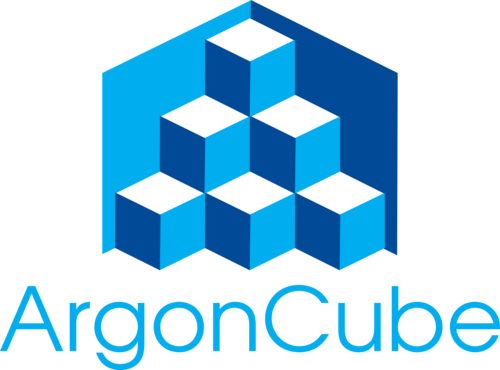
A team of Wright Lab researchers from the Yale High Energy Neutrino Physics group, including associate research scientist Domenico Franco and graduate students Lee Hagaman and Giacomo Scanavini, have recently joined the research and development (R&D) effort for a new detector technology that is being developed for use by the international ArgonCube collaboration. ArgonCube, with its novel modular Liquid Argon Time Projection Chamber (LArTPC) detector design and innovative technique of pixelated charge readout, will serve as the near detector for the Deep Underground Neutrino Experiment (DUNE).
DUNE is a planned neutrino experiment with a detector composed of multiple LArTPCs. This experiment will send a high energy neutrino beam over a distance of 1,300 km from Fermilab in Batavia, IL to the Sanford Underground Research Facility (SURF) in Lead, South Dakota. DUNE will be used to study a phenomenon known as CP-violation, which may help explain the matter-antimatter imbalance in the universe and determine the neutrino mass hierarchy; as well as to explore low-background physics, such as proton decay and supernova detection, to measure the parameters that characterize three-flavor neutrino oscillations with an unprecedented precision that will improve understanding of the oscillation mechanism.
The Yale High Energy Neutrino Physics group, led by Wright Lab professor of physics Bonnie Fleming, is an experimental group that focuses on new physics in the neutrino sector. In addition to running experiments such as MicroBooNE at Fermilab (for which the Time Projection Chamber (TPC) and data acquisition (DAQ) systems were fabricated and assembled by the group at Wright Lab), the group carries out R&D on the next generation of LArTPC accelerator neutrino detectors, including DUNE.
Fleming said, “Wright Lab, as a world-class center for research instrumentation, brings resources, people, and our community of scientists to these new efforts on ArgonCube and for the DUNE experiment.”
Visiting Wright Lab professor and professor Emeritus at the University of Bern Antonio Ereditato, who recently joined the group, has accomplished several R&D studies on particle detectors, including wire chambers, calorimeters, time projection chambers, nuclear emulsions, and detectors for medical applications. Ereditato is one of the founders of DUNE and has contributed to the realization of the prototypes that will lead to ArgonCube.
Ereditato said, “I am excited to see that my past work on ArgonCube in Bern is being continued here at Wright Lab. We are all looking forward to new groundbreaking developments in view of the application of this novel technology to the DUNE project!”
The Laboratory for High Energy Physics (LHEP) at the University of Bern and the ArgonCube collaboration has already assembled ARGONTUBE, a 5-meter-long drift LArTPC, to prove the feasibility of charge drift over very long distances in liquid argon, as well as set up a test run using one of the ArgonCube modules to take data on both light and charge measurements with cosmic-rays. The Yale team is studying the data from this test run and learning more about the LArTPC technology.
Scanavini said, “Collaborating with the LHEP team has been extremely useful. They have shared a lot of insights and their experience regarding detectors and how LArTPCs work, and I’m really glad. When you start taking into consideration all the factors that allow your detector to run, you realize there is a lot going on behind the data we generally analyze and plot.”
Fleming said, “This is a great opportunity for Wright Lab and for the students working on DUNE to be a part of the development of this innovative technology.”
The next step in testing the detector is to develop the ArgonCube 2-by-2 LArTPC prototype, which is focused on demonstrating the modular concept of the ArgonCube detector, and will be the first DUNE detector tested on a neutrino beam, at Fermilab. The Wright Lab team will play a crucial role in developing and testing the 2-by-2 detector, and will also be an integral part of the development of the final ArgonCube detector, from the construction and assembly of the modules to the data taking and analysis.
Fleming continued, “In joining the DUNE near detector, ArgonCube effort, we become part of an international collaboration of scientists working to develop this technology for the near site for DUNE.”
Michele Weber, director of LHEP said, “A feature of the modular ArgonCube is that the modules can be built in a distributed way by several institutions. The collaboration with Yale marks a big step in that direction.”
The ArgonCube collaboration consists of more than 100 physicists from 23 institutes, including Argonne National Laboratory, University of Texas at Arlington, University of Aveiro, University of Bern, Brookhaven National Laboratory, Colorado State University, Joint Institute for Nuclear Research in Dubna, Fermilab, Harvard University, University of Iowa, Lawrence Berkeley National Laboratory, Michigan State University, Middle East Technical University Ankara, Pacific Northwest National Laboratory, University of California at Berkeley, University of Pennsylvania, University of Rochester, University of Sheffield, SLAC National Accelerator Laboratory, University of South Carolina, Stony Brook University, Syracuse University, and Yale University.

